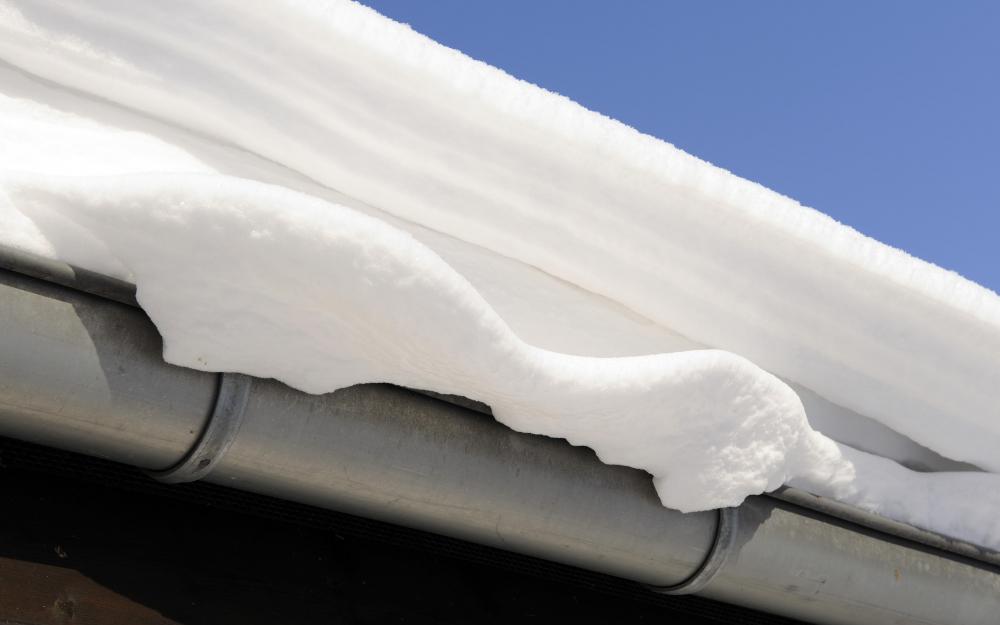At WiseGEEK, we're committed to delivering accurate, trustworthy information. Our expert-authored content is rigorously fact-checked and sourced from credible authorities. Discover how we uphold the highest standards in providing you with reliable knowledge.
What are the Best Tips for Roof Deicing?
Roof deicing methods mostly fall into two categories: preventative measures to prevent snow and ice build up, and removal of snow and ice after it has accumulated. Generally, the most effective tip for roof deicing is to prevent snow and ice buildup by installing roof deicing coils or wires. If this is not possible, there are ways to remove snow and ice after it accumulates on a rooftop, including shoveling and spreading a deicer.
Preventative roof deicing usually involves the installation of heating elements on the roof in a warm or temperate season. A multitude of these roof deicing systems are available, but most employ the same tactics to keep snow and ice from building up and become an inconvenience or hazard. Typically, cables or wires are installed either beneath or on top of roof shingles. Low-voltages of electricity run through these cables, which generates enough heat to melt the ice without damaging the roof’s surface.

Heated cable systems can be a great advantage and save a lot of time and energy during the snowy seasons. They are generally a significant investment at the time of installation. These set-ups are more expensive than most other roof deicing techniques, but might be worth the money to people living in climates that experience large amounts of cold weather and snow.

Deicing a roof that does not have a heated cable system will probably require more physical work. It is possible to shovel snow off a roof, but extreme caution should be utilized during this process. A roof with a dramatic pitch is not safe to shovel; flat surfaces that allow for sure footing and minimal risk of falling are the only ones that should be shoveled. Also note that aggressive shoveling can cause damage to shingles, so it is important to shovel in the direction in which the shingles lie. For the safety of passers-by, shovelers should be sure to give loud warning before tossing snow or ice from the roof.
Another option for roof deicing is to spread a commercial deicer. While it is possible to use rock salt, this is generally not recommended because the salt is highly corrosive and could cause damage to shingles and any metal flashing on the roof or gutters. Commercial deicers are available in other formulas that may be gentler on roof surfaces. To be extra sure that the roof will not be damaged by corrosive deicing solutions, users should scatter the deicer, but instead of leaving it to dissolve all of the ice, it should be left it work for a while and the softened remains will then be easy to shovel off.
AS FEATURED ON:
AS FEATURED ON:












Discussion Comments
When I was growing up in a house in Ohio, I noticed our roof rarely remained iced-over during even the harshest winters. Massive icicles would form from the edge of the roof to the ground, however. I found out later that the cause of all this was not good.
If a roof does not collect snow or ice during winter months, the cause is most likely poor insulation. The heat from the inside of the house is constantly deicing the roof, causing streams of water to form large icicles as they drip down to the ground. Poor insulation means higher energy costs.
If you have to do something about deicing your roof every year, at least you know the insulation is doing its job.
Post your comments